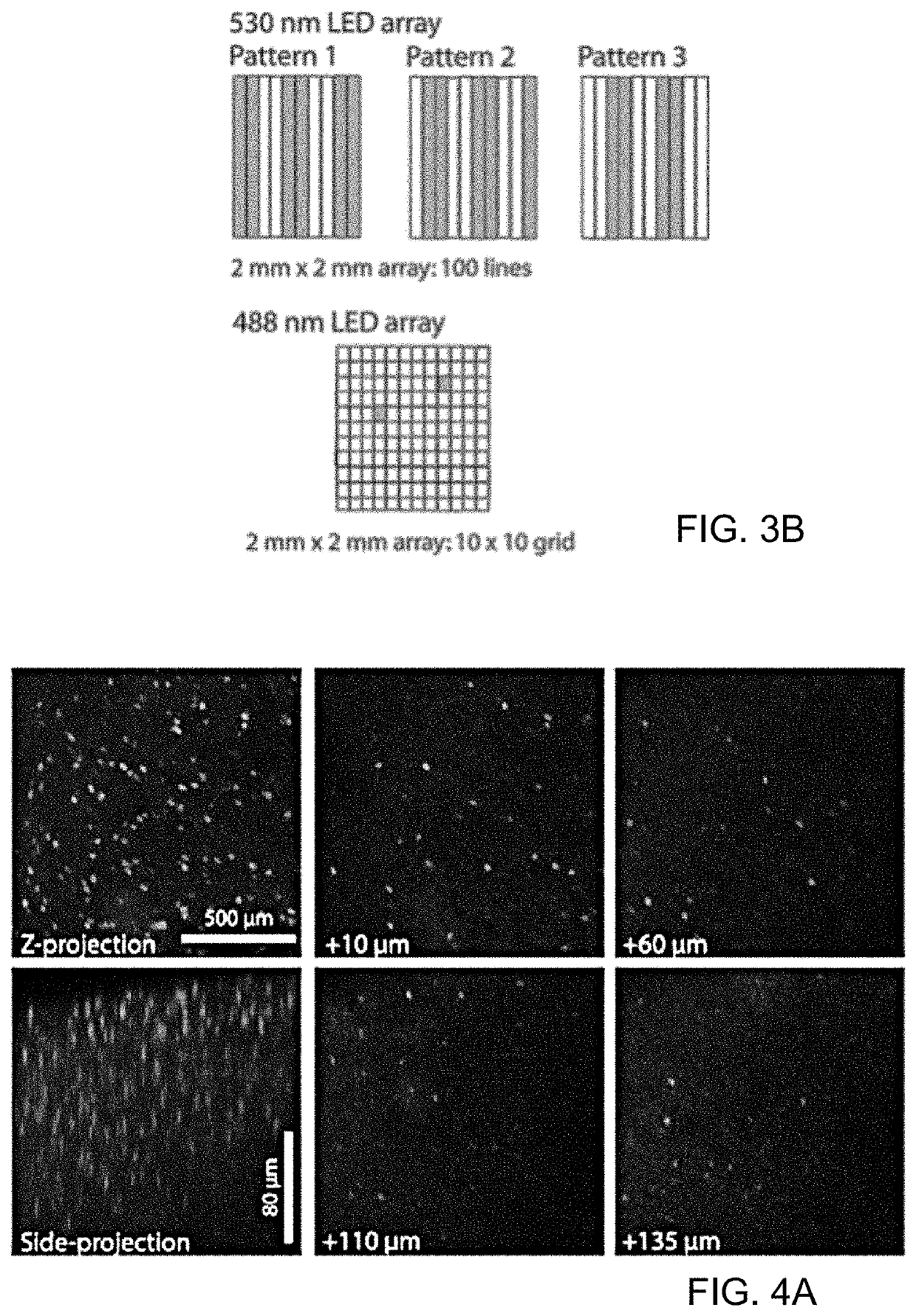Optical interfaces and methods for rapid volumetric neural modulation and sensing
a volumetric neural and optical interface technology, applied in the field of imaging technologies, can solve the problems of limiting specificity, limiting light penetration, and failing to record the ability to be detected
- Summary
- Abstract
- Description
- Claims
- Application Information
AI Technical Summary
Benefits of technology
Problems solved by technology
Method used
Image
Examples
Embodiment Construction
[0033]To address challenges in the art such as those described above in the Technical Background section, the present disclosure provides a variety of methods and systems for rapid modulation and sensing of tissue, e.g., neural tissue such as brain tissue.
[0034]For example, various embodiments of the present disclosure provide for a miniature microscope system and methods for using it for stimulating and imaging neural activity using light. The closest technology would be the miniscope, (e.g., a miniature wide field fluorescent microscope that incorporates an LED light source with optics, dichroics, and a miniature CMOS detector). Some of the differences of the present technology include the following:
[0035]1. Some embodiments include a miniature electrowetting electrically tunable lens that scans the focal length of the microscope to allow three-dimensional imaging. Electrowetting electrically tunable lenses are described in more detail, e.g, in U.S. Patent Application Publication ...
PUM
 Login to View More
Login to View More Abstract
Description
Claims
Application Information
 Login to View More
Login to View More - R&D
- Intellectual Property
- Life Sciences
- Materials
- Tech Scout
- Unparalleled Data Quality
- Higher Quality Content
- 60% Fewer Hallucinations
Browse by: Latest US Patents, China's latest patents, Technical Efficacy Thesaurus, Application Domain, Technology Topic, Popular Technical Reports.
© 2025 PatSnap. All rights reserved.Legal|Privacy policy|Modern Slavery Act Transparency Statement|Sitemap|About US| Contact US: help@patsnap.com



